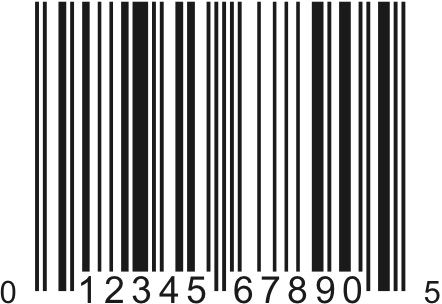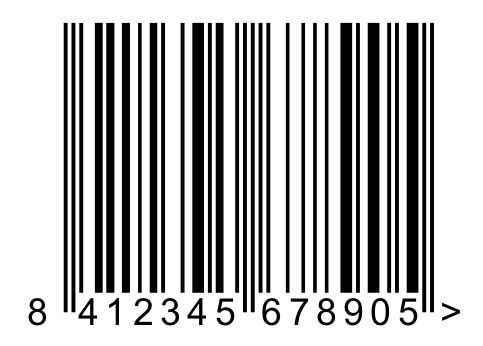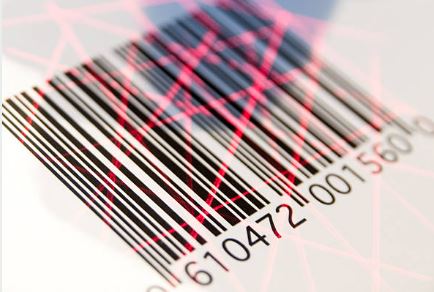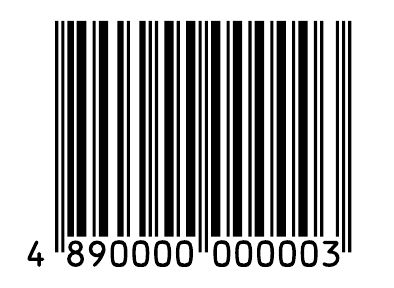How to add a barcode to my product - 如何為我的產品添加條形碼
Barcode implementation is a fundamental tool in the business world.
條形碼實施是商業世界中的基本工具。
The commercial barcode system allows the identification and tracking of products, simplifies the processes of inventory management, sales control and billing, and allows obtaining valuable information on the logistics and distribution of products.
This report will explain in detail the most important aspects in relation to the implementation of a barcode in a product. GS1, remember, is the world agency that issue barcode numbers.
IF YOU NEED AN OFFICIAL NATIONAL BARCODE (PREFIX 489), TO BRING YOUR PRODUCT TO MARKET, CLICK HERE.
What is a barcode?
什麼是條形碼?
A barcode is a graphic, translation into bar language (understood by a computer), of a series of numbers that uniquely identify a product.
These barcodes are printed on labels that are attached to the product and are scanned by electronic devices that allow the identification and inventory of the product.
Commercial Barcode Types
商業條碼類型
There are two types of commercial barcodes, the EAN-13 code and the UPC.
UPC Barcode: The UPC code is used in North America and is also recognized worldwide. This code is made up of 12 digits, the first six being those that identify the manufacturer and the following six those that identify the product.

UPC Barcode
EAN Barcode: The EAN-13 barcode is used in Europe and is recognized worldwide. This code is made up of 13 digits, the first three being those that identify the country and the following nine those that identify the product. Used worlwide in Amazon, eBay, Google Shopping...

EAN Barcode
Benefits of implementing a commercial barcode:
實施商業條形碼的好處:
The implementation of a commercial barcode in a product has numerous benefits, among which are:
- Greater speed and efficiency in the processes of inventory management, sales control and billing.
- Reduction of errors in the identification and monitoring of products.
- Greater security in the distribution chain, since it allows the tracking of products from their origin to their final destination.
- Facilitates strategic decision making on product logistics and distribution.
Steps to put a commercial barcode on a product:
在產品上放置商業條形碼的步驟:
- Obtain the official numbering of the commercial barcode: For this it is necessary to go to the organization that is in charge of assigning and registering barcodes, GS1, or, much more convenient, to go to companies such as Hong Kong Barcodes, which will deliver the same numbers official, but under more advantageous conditions, without life annuities or sterile bureaucracy. Thus we will have a unique barcode for each product, which guarantees its unique and universal identification.
- Create the labels with the barcode: Once the barcode is obtained, it is necessary to create labels that contain the code. These labels can be created at a specialist label printer or they can be generated by a label maker.
- Adhere the labels to the product: The barcode labels must be adhered to the product in an appropriate manner and in a visible place. It is important to ensure that the labels are firmly attached to prevent them from coming off during transport or handling of the product.
- Configure management systems: For the barcode to be effective, it is necessary to configure the inventory management, sales control and billing systems to recognize and use the barcode.

Steps to read the commercial barcode of a product:
讀取商品商業條碼的步驟:
To read a barcode, a barcode reader is necessary.
Barcode readers are devices that use a light to read and decode the information encoded in the barcode.
Here are some steps you can take to read a barcode:
- Turn on the barcode scanner and make sure it is set up correctly
- Align the barcode reader with the barcode. Most barcodes have a guide line that will help you align the reader with the barcode.
- Press the scan button on the barcode reader. Most barcode scanners automatically scan the barcode when the guide line is detected.
- Wait for the barcode reader to decode the barcode information. The information will be displayed on the reader's screen or sent to the connected computer or device. It is important to ensure that the barcode is clean and legible to ensure correct reading.
Also, some barcodes may require special settings to read correctly, so be sure to review your barcode reader's user manual before using it.
In order for a barcode to be read correctly, it must meet certain technical specifications. Here are some key elements that must be present in a barcode for it to be read correctly:
1. Bandwidth: Bandwidth refers to the width of the bars and spaces in the barcode. It must be uniform and within a specific range in order for the barcode reader to read it correctly.
2. Barcode Height: The barcode must be a specific height in order for the barcode reader to read it correctly. If it is too low or too high, the barcode reader may have difficulty reading it.
3. Silence space: The silence space is the white space that surrounds the barcode. It must be of a minimum length so that the barcode reader can clearly distinguish the start and end of the barcode.
4. Orientation: The barcode must be oriented correctly in relation to the barcode reader. If it is too tilted or misaligned, the barcode reader may have a hard time reading it.
5. Print quality: The print quality of the barcode is important. The barcode must be clearly printed and must not have smudges or fades that could make it difficult to read.
In short, for a barcode to be read correctly, it must have a uniform width of bars and spaces, a specific height, an adequate gap of silence, be correctly oriented, and have good print quality.
Even though barcode reading technology is very advanced, there are still some errors that can occur while reading barcodes. Here are some of the most common barcode reading errors:
1. Damaged barcodes: If the barcode is damaged, scratched or smudged, the reader may not be able to read it correctly.
2. Poorly printed barcodes: If the barcode is not printed with sufficient quality, it can be difficult for the barcode reader to read.
3. Incorrect Orientation: If the barcode is not oriented correctly in relation to the barcode reader, the reader may have difficulty reading it.
4. Insufficient lighting: If the lighting in the area where the barcode is located is not sufficient, the barcode reader may have difficulty reading it.
5. Incorrect use of the reader: If the barcode reader is not used correctly, such as not aligning the reader with the barcode or not pressing the scan button correctly, it can lead to reading errors.
6. Configuration problems: If the barcode reader is not configured correctly to read the specific type of barcode, it may not be able to read it.

It is important to take steps to avoid these errors, such as keeping barcodes clean, making sure they are correctly printed, oriented, and well-illuminated, and making sure you are using the barcode scanner correctly.
IF YOU NEED AN OFFICIAL NATIONAL BARCODE (PREFIX 489), TO BRING YOUR PRODUCT TO MARKET, CLICK HERE.
HONG KONG OFFICIAL EAN-13 BARCODE, 489 PREFIX
CONTACT US NOW!


